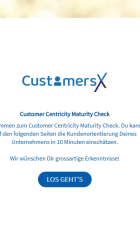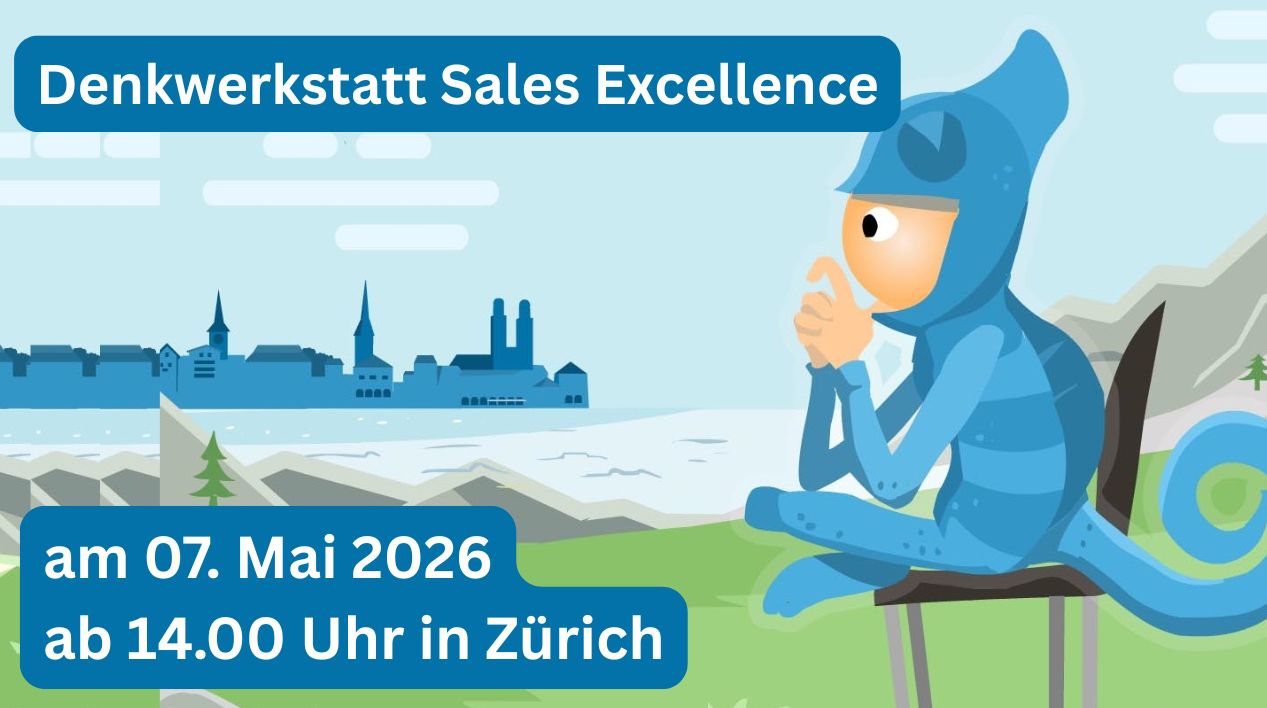The Customer Centricity Think Tank 2021 was conducted in collaboration with the Center for Sales & Retail at the HWZ. The name think tank is the program. After a brief introduction to our approach to customer Centricity, the topic of customer centricity was examined in greater depth from the perspective of a large corporation (Hilti) and an e-commerce provider (Amorelie).
The first presentation of the Customer Centricity 2021 think tank was given by Jean-Louis Keraudren (Global Head of Customer Experience at Hilti). He elaborated on the importance of management commitment versus the importance of customer focus. In addition, he stated that his goal is that in the coming years his department will no longer even be necessary because the company has so internalized the theme of customer centricity and the continuous transformation that this requires. Another aspect he addressed was that, in his view, it is becoming more difficult to improve customer centricity, especially in larger companies. He also confirmed the high value of co-creation. His examples made it clear that without management combined with the right culture, it is very difficult to improve customer focus.
The second presentation of the Denkwerkstatt Kundenorientierung 2021 was given by Inga Bohn (Customer Centricity at Amorelie). She elaborated on her experience on customer centricity in a small e-commerce company. Especially the topic of sexuality and the inclusion of customers or gaining valuable customer insights in this topic area was very enlightening. It was able to show that the reservation in practice towards the continuous use of customer feedback is not justified in the respective decisions. In addition, she was able to demonstrate how important the topic of speed has become in gaining customer insights. Since qualitative customer feedback is an important building block for companies to be convincing, it is important to gain this feedback as quickly and efficiently as possible.
Both presentations illuminated customer centricity from very different perspectives. It quickly became apparent that the respective company or industry does not have such a large influence on the strength of customer centricity. Ultimately, the same success factors for improving customer centricity apply to all companies. Executive commitment, value-based intelligence, co-creation, and continuous transformation to successfully adapt to changing customer buying behaviors.
In the last part of the Customer Centricity Think Tank 2021, the most important success factors of customer orientation were discussed by the participants in four workshop tracks. The think tank should not only present, but also enable the active involvement of the participants. The participants had previously assessed the customer centricity of their own company using our Customer Centricity Maturity Check.
In the area of customer value-based decision making, the use of a powerful customer value model and segmentation were mentioned. Here, both factors are connected. Every company needs multiple segmentations. The respective integration of customer value as an axis of segmentation can thus ensure value-based decision-making as well as alignment between the different departments.
In the area of customer-centric transformation, culture and processes were named as key success factors. As in the presentations, the high importance of the management’s commitment to the topic of customer centricity was addressed. In addition, customer experiences must always be understood as processes. This must be continuously improved.
In the area of co-creation, the incentive system and the use for sales and service were addressed. The involvement of customers in the decisions of the respective company is usually only carried out on an ad-hoc basis. Long-term plans with optimal incentive systems for customer integration are often lacking. Furthermore, co-creation is still used far too rarely in the areas of sales and service. Here, the example of product reviews at Amorelie could show how valuable co-creation is in everyday life.
A confusion arose in the Customer Management area. The success factors identified by the group belong to the area of Customer Value-based Decision Making. This illustrates how important it is to understand customer centricity systematically. Our Customer Centricity Canvas is an important tool for this, so that the respective success factors can be clearly identified and the dependencies can be shown.
We would like to thank the two speakers for their great interest and are already looking forward to the Think Tank Customer Centricity 2022.








